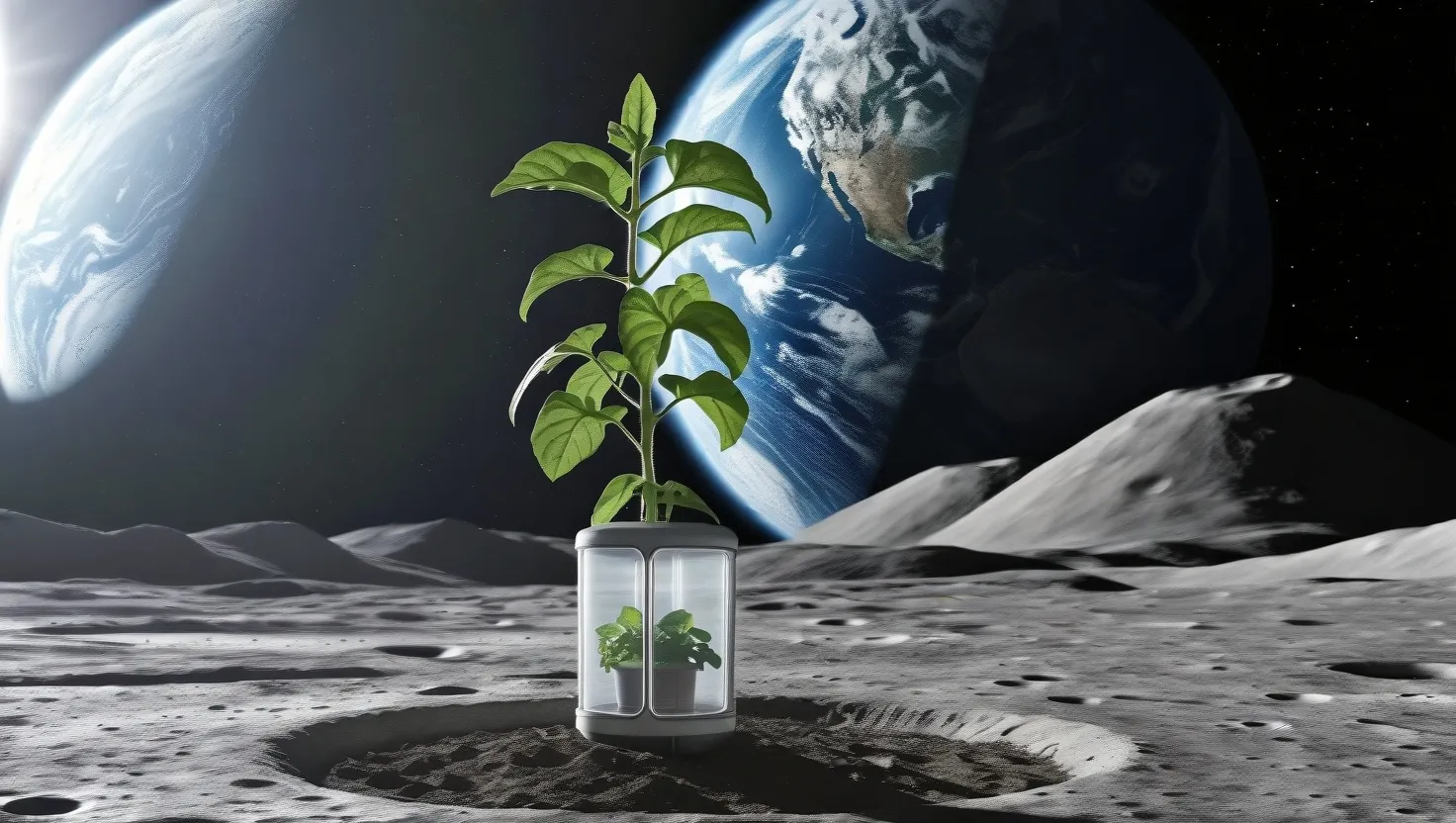As we venture further into the cosmos, the idea of establishing sustainable human settlements on the Moon and beyond is no longer a fantasy, but a tangible goal. A crucial aspect of this endeavor is lunar agriculture, the practice of growing food in the harsh, extraterrestrial environment of the Moon. This emerging field is not just about feeding astronauts; it holds the key to long-term space exploration and even offers valuable insights for sustainable agriculture back on Earth.
The Challenges of Lunar Soil
One of the primary hurdles in lunar agriculture is the Moon’s soil, or regolith. Unlike Earth’s soil, lunar regolith is devoid of organic matter and has a completely different elemental composition. It lacks the nutrients and microorganisms that plants rely on for growth. Researchers have found that plants grown in genuine lunar regolith become stunted and physiologically stressed, largely due to the presence of toxic elements like chromium. To overcome this, scientists are exploring ways to detoxify the regolith using algae species known to rehabilitate chromium-poisoned soils on Earth.
Innovative Technologies and Experiments
NASA and various research institutions are at the forefront of this innovative field. For instance, the Lunar Effects on Agricultural Flora (LEAF) experiment, part of the Artemis III mission, aims to study how the lunar environment affects plant growth. This experiment will expose plants to the Moon’s partial gravity and elevated radiation, providing the first comprehensive assessment of how these conditions impact plant biology. The LEAF project involves growing plants like Arabidopsis thaliana, Brassica rapa, and Wolffia in a controlled growth chamber on the lunar surface. These plants will be protected from excessive sunlight and radiation but intentionally exposed to deep space conditions to understand their responses.
Another groundbreaking approach comes from Dr. Joan Lynam’s Biomass Lab at Louisiana Tech University. Here, researchers have developed a method to grow crops without soil, using a water-based environment enriched with essential nutrients. This technique involves recycling urine into water and converting the waste byproducts into fertilizer, a crucial step in creating a sustainable source of water and nutrients in space. This method not only helps in space farming but also has the potential to make the world greener and cleaner by turning waste into usable products.
Managing Water and Nutrient Cycles
Water management is a critical aspect of lunar agriculture. Since water is scarce and cannot be easily resupplied from Earth, recycling and efficient use are paramount. The research at Louisiana Tech demonstrates how urine can be recycled into water, and the waste can be converted into fertilizer. This closed-loop system ensures that resources are used sustainably, a principle that could also benefit Earth’s agriculture, especially in regions facing water scarcity.
Sustainable Food Systems
Creating sustainable food systems on the Moon involves more than just growing plants; it requires a holistic approach to life support. Plants play a dual role: they provide food and oxygen while consuming carbon dioxide. The experiments on the International Space Station (ISS) have already shown that plants can thrive in microgravity, with astronauts successfully growing and consuming salads in space. However, scaling up this process to meet the needs of long-duration missions is the next challenge.
The LEAF project and similar research endeavors are paving the way for large-scale plant farming in space. By understanding how plants adapt to lunar conditions, scientists can develop strategies for sustainable crop production. This includes using automated growth chambers that can protect plants from the harsh lunar environment while allowing them to grow under controlled conditions.
Implications for Earth and Future Missions
The research in lunar agriculture has far-reaching implications that extend beyond the Moon. The technologies and insights gained from these experiments can improve crop resilience on Earth, particularly in extreme environments. For example, understanding how plants respond to stress in space can help develop more robust crops that can thrive in areas affected by climate change.
Moreover, the bioregenerative life support systems being developed for space can also be applied to Earth. These systems, which recycle resources and minimize waste, could be crucial in addressing global issues like food security and environmental sustainability. The study of plant biology in space also provides valuable data on cellular-level damage, which can be directly applicable to understanding and mitigating the effects of radiation on humans.
A Step Towards Permanent Human Presence
The ultimate goal of lunar agriculture is to support a permanent human presence on the Moon and eventually on Mars. By establishing sustainable food production systems, future missions can reduce their reliance on Earth-based supplies, making long-duration space travel more feasible. The Artemis program, with its ambitious plan to return humans to the Moon by 2024, is a significant step in this direction.
As we continue to push the boundaries of space exploration, the work in lunar agriculture serves as a reminder of the interconnectedness of our endeavors. What we learn from growing plants on the Moon can not only help us survive in space but also contribute to a more sustainable future on Earth. This field is not just about the technical challenges of farming in space; it’s about the broader vision of creating a sustainable, self-sufficient presence in the cosmos.
In the end, lunar agriculture is more than just a scientific curiosity; it’s a necessary step in our journey to become a multi-planetary species. As we embark on this journey, we are not just exploring the Moon; we are exploring the possibilities of a sustainable future for all of humanity.






